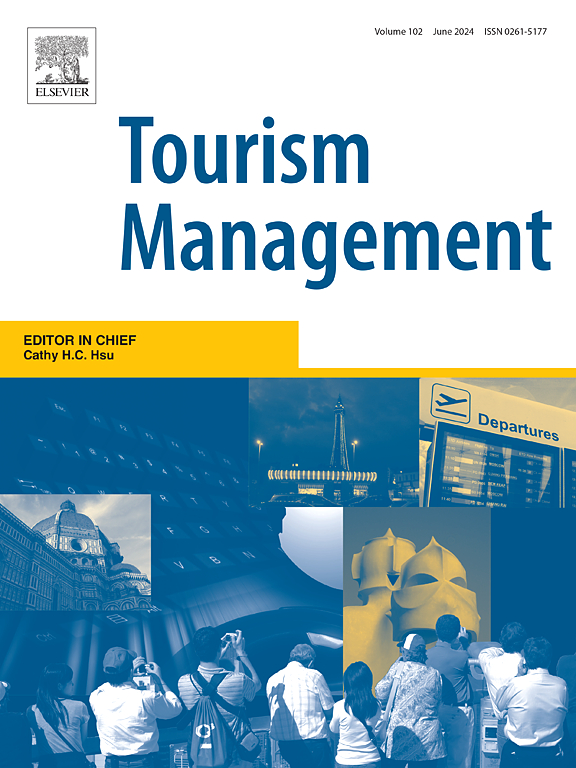平衡经济效益与环境成本:在旅游市场定位中引入碳足迹指标
IF 12.4
1区 管理学
Q1 ENVIRONMENTAL STUDIES
引用次数: 0
摘要
我们认为,政府在决定以某些旅游市场为目标时,必须同时考虑收益和成本。我们设计了一种综合指标方法来评估经济效益,使用了六项衡量市场可取性的经典指标(领导力、活力、季节性、停留时间、支出和连通性),并辅以两项碳足迹指标(每晚游客产生的二氧化碳当量和每次游客旅行产生的二氧化碳当量),这两项指标表明了地球所产生的一些成本。当碳成本在目标市场选择指标中的权重从零(当前情况)变为 25% 和 50% 时,我们将模拟目标市场决策应如何变化。在成本效益分析中加入碳数据后,尽管游客停留时间较短或支出较低,但由于碳足迹较低,地区和国家市场比远郊市场更具吸引力。我们的方法可以为政府的去碳化战略提供参考,同时保持明确的市场重点。本文章由计算机程序翻译,如有差异,请以英文原文为准。
Balancing economic benefits and environmental costs: Introducing carbon footprint indicators in tourist market targeting
We argue that governments’ decisions to target certain tourist markets must consider both benefits and costs. We design a composite indicator methodology to assess economic benefits, using six classic indicators of market desirability (leadership, dynamism, seasonality, length of stay, expenditure and connectivity), which we complement with two carbon footprint indicators indicative of some of the costs incurred by the planet (CO2e per tourist night and CO2e per tourist trip). We model how target market decisions should change as the weight given to carbon costs changes from zero (current scenario) to 25% and 50% in the set of indicators used to select target markets. Adding carbon data in a cost-benefit analysis makes regional and national markets much more attractive than distant markets due to their low carbon footprints, despite shorter tourist stays or lower expenditures. Our method can inform government strategies to decarbonize while maintaining a clear market focus.
求助全文
通过发布文献求助,成功后即可免费获取论文全文。
去求助
来源期刊

Tourism Management
Multiple-
CiteScore
24.10
自引率
7.90%
发文量
190
审稿时长
45 days
期刊介绍:
Tourism Management, the preeminent scholarly journal, concentrates on the comprehensive management aspects, encompassing planning and policy, within the realm of travel and tourism. Adopting an interdisciplinary perspective, the journal delves into international, national, and regional tourism, addressing various management challenges. Its content mirrors this integrative approach, featuring primary research articles, progress in tourism research, case studies, research notes, discussions on current issues, and book reviews. Emphasizing scholarly rigor, all published papers are expected to contribute to theoretical and/or methodological advancements while offering specific insights relevant to tourism management and policy.
 求助内容:
求助内容: 应助结果提醒方式:
应助结果提醒方式:


